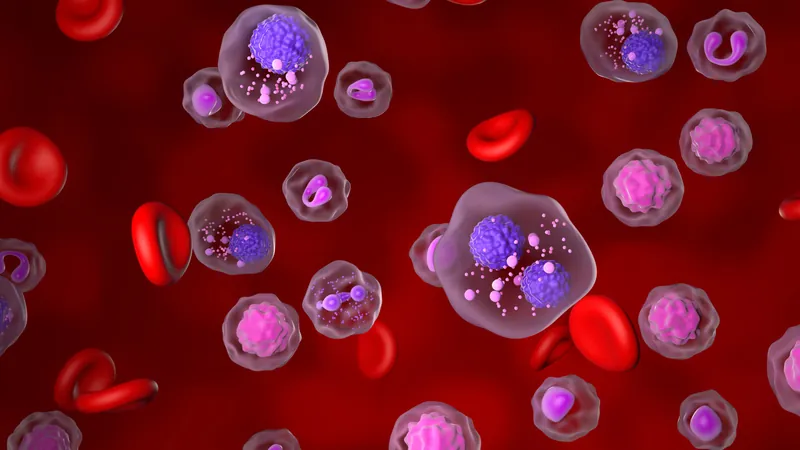
Revolutionary Breakthrough May Overcome Lenalidomide Resistance in Multiple Myeloma
2025-04-10
Author: Arjun
Exciting New Research from Singapore Unveils Drug Resistance Mechanism
In a groundbreaking study by the Cancer Science Institute of Singapore at the National University of Singapore, researchers have identified a crucial mechanism behind lenalidomide resistance in multiple myeloma (MM). This revelation could transform treatment strategies and enhance outcomes for countless patients.
The Science Behind Lenalidomide Resistance
Led by Dr. Teoh Phaik Ju and Dr. Koh Mun Yee, alongside Professor Chng Wee Joo and Associate Professor Polly Chen, the team pinpointed the ADAR1 gene, responsible for an RNA editing enzyme. This gene plays a vital role in triggering an immune response against MM cells when treated with lenalidomide, a critical immunomodulatory drug.
Multiple myeloma, a cancer affecting plasma cells in the bone marrow, has seen improved survival rates due to treatments like lenalidomide. However, many patients face relapse as they develop resistance to this medication. While defects in cereblon—the protein lenalidomide targets—account for 20-30% of these cases, the majority of resistance mechanisms have remained elusive until now.
Unveiling the Role of ADAR1
The study elucidates how ADAR1 impedes lenalidomide's effectiveness by editing double-stranded RNA (dsRNA), ultimately stifling immune responses necessary for combating MM. Remarkably, the researchers found that lowering ADAR1 levels and increasing dsRNA accumulation in MM cells significantly enhances their sensitivity to lenalidomide. This exciting discovery highlights the potential of dsRNA pathways in overcoming IMiD resistance.
A New Dawn for Treatment Strategies
The implications of targeting ADAR1 and the dsRNA pathway are monumental in the fight against lenalidomide resistance in MM. With ongoing clinical trials exploring new IMiD analogues, such as CRBN-E3 ligase modulators (CELMoDs), combining these with ADAR1 inhibitors could lead to innovative and more effective treatment plans. Currently, ADAR1 inhibitors are in preclinical development, promising a new frontier in multiple myeloma therapy.
Moreover, the research team aims to further explore ADAR1's role in alternative splicing, a genetic regulatory mechanism that could unveil additional therapeutic possibilities. This ongoing investigation promises a future where novel treatments can significantly improve the quality of life for MM patients.




 Brasil (PT)
Brasil (PT)
 Canada (EN)
Canada (EN)
 Chile (ES)
Chile (ES)
 Česko (CS)
Česko (CS)
 대한민국 (KO)
대한민국 (KO)
 España (ES)
España (ES)
 France (FR)
France (FR)
 Hong Kong (EN)
Hong Kong (EN)
 Italia (IT)
Italia (IT)
 日本 (JA)
日本 (JA)
 Magyarország (HU)
Magyarország (HU)
 Norge (NO)
Norge (NO)
 Polska (PL)
Polska (PL)
 Schweiz (DE)
Schweiz (DE)
 Singapore (EN)
Singapore (EN)
 Sverige (SV)
Sverige (SV)
 Suomi (FI)
Suomi (FI)
 Türkiye (TR)
Türkiye (TR)
 الإمارات العربية المتحدة (AR)
الإمارات العربية المتحدة (AR)